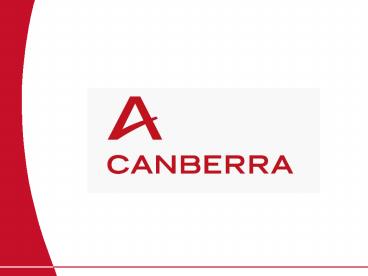Use of Acoustic Wave Analysis in Safeguards Applications - PowerPoint PPT Presentation
1 / 14
Title:
Use of Acoustic Wave Analysis in Safeguards Applications
Description:
Secure materials or equipment against tampering ... opening or entry into the volume disturbs this distribution and is marked as an intrusion ... – PowerPoint PPT presentation
Number of Views:213
Avg rating:3.0/5.0
Title: Use of Acoustic Wave Analysis in Safeguards Applications
1
(No Transcript)
2
Use of Acoustic Wave Analysis in Safeguards
Applications
Michael Goldfarb Marius Stein Canberra
Albuquerque, Inc.
- International Safeguards Workshop
- Advanced Sensors for Safeguards
- Santa Fe, New Mexico USA
- 23 April - 27 April 2007
- sponsored by The U. S. Support Program
- On behalf of the International Atomic Energy
Agency
3
Canberra Albuquerque, Inc.
- Member of the AREVA family
- AREVA
- World leader in nuclear power
- 9 billion company
- 50,000 employees in more than 30 countries
4
Containment Verification in Safeguards
- Containment verification (CV) measures
- Secure materials or equipment against tampering
- Indicate any attempt to tamper with a containment
- Do not provide physical protection
- Areas under containment
- instrument cabinets
- nuclear material storage containers
- conduits
- Maintaining containment integrity as important to
safeguards as seals - No quantitative verification methods are
currently in use - Methods to verify the integrity of a containment
must be developed
5
Current CV Methods
- On-site
- Carried out by inspectors
- Main methods are qualitative
- Sensory basis
- Visual check for changes or relocation
- Olfactory chemical smells can indicate cleaning
or repainting - Touch (feeling surface for changes)
- Auditory (listening for rumors and information
from operators)
6
Role of Inspectors in Containment Verification
- Inspectors must be trained to extract as much
containment information from on-site operators as
possible - Enhanced observational skills training provided
by inspection authority - No way to reconfirm activities undertaken on site
- Mutual trust between operators and inspectors is
necessary
7
Acoustic Wave Analysis Introduction
- Technology driven primarily from military
submarine applications - Method
- Acoustic source establishes an energy
distribution within an enclosure - Any opening or entry into the volume disturbs
this distribution and is marked as an intrusion - Appropriate for use in Containment Verification
- Ideal for situations with very specific signals
of interest or areas with very low background
noise - For a machine operating at a stabilized speed,
spectrum can be averaged to find machines normal
rotation speed
8
Advantages
- Advantages
- Video surveillance does not directly monitor
parameters (i.e., equipment status) - Not limited by line-of-sight
- Some events are detectable only through audio
signals - Noise can draw inspectors attention, allow
quicker and more accurate post analysis - Acoustic sensors can significantly enhance system
performance - Passive, non-intrusive
9
Acoustic Wave Analysis in Industrial Processes
- Aids in preventive maintenance to detect wear of
main mechanical parts helps to plan actions
before a fault occurs - Acoustic wave analysis system already used in
industry proven and mature technology - Access to the system can be performed remotely
through a web link.
Wave Analysis System at Industrial Site
10
Obstacles
- Major obstacle Differentiating between multiple
audio sources present in acoustic signal - Sources of interest
- False alarms
- Background noise
- Sound generation is associated with the movement
of parts in a wide frequency range (10Hz to
several KHz, due to damping and frequency
reflections) - Specific processing methods designed to reject
background noise - Method Extract key parameters that allow for
verification from the signature - Meeting industry acoustic comfort concerns
- System developed to meet concern
11
Differentiation
Door Closing
Metal Shock
12
Extracting Key Parameters from Signature
- Two main methods
- Statistical approach based on a library of
recorded reference signals that are used to
extract as many parameters as possible - A physical model of the sound generation that
allows the determination of the signal main
characteristics. - Both method extract n parameters from measured
goal
13
Extracting Key Parameters from Signature
- Third method concentrate on a specific device
- Signature can be recorded on-site
- Signature of equipment while running serves as a
reference model - Signal variation indicates mechanical
modifications
Sound sources marked within camera image
14
Conclusions
- Acoustic wave analysis systems used widely
throughout industry - Well-suited to control known installations where
reference noise and vibrations can be recorded as
a learning process - Possible applications range from triggering to
tamper protection and preventative maintenance - Next step
- Define a typical safeguards scenario
- Perform testing on real data































